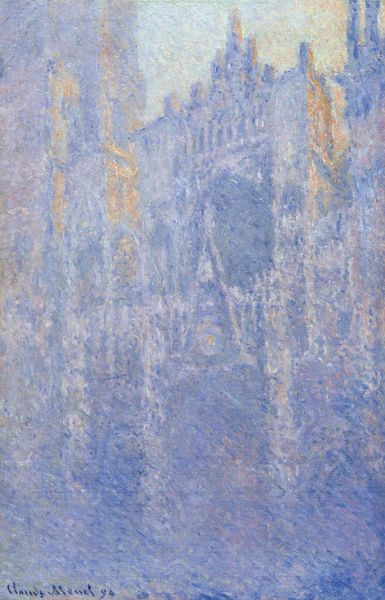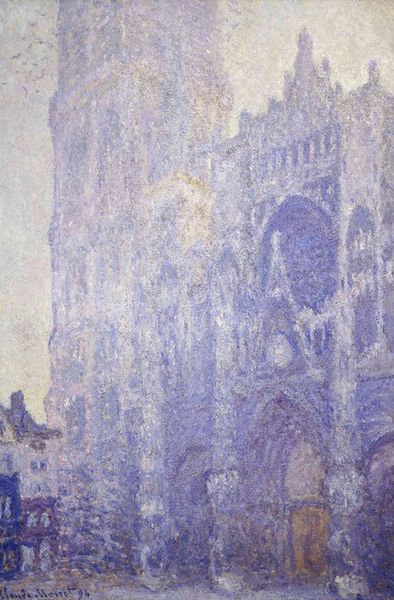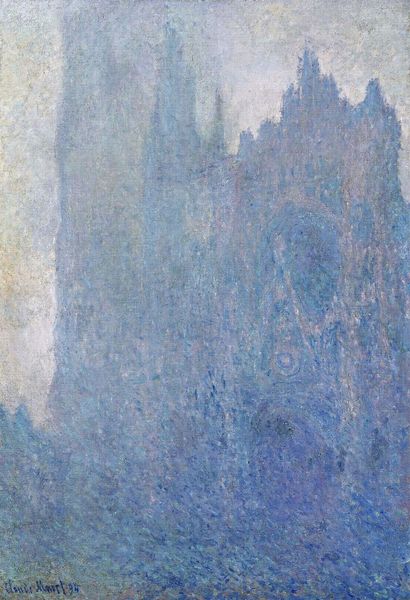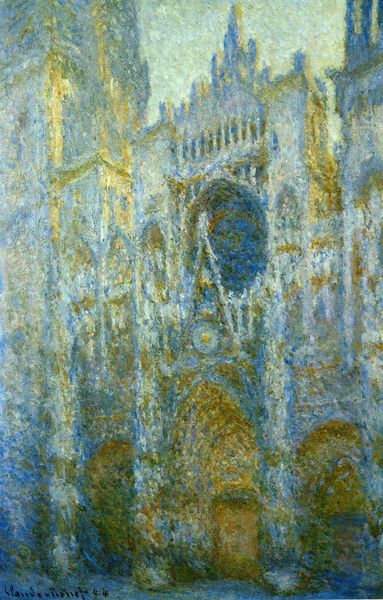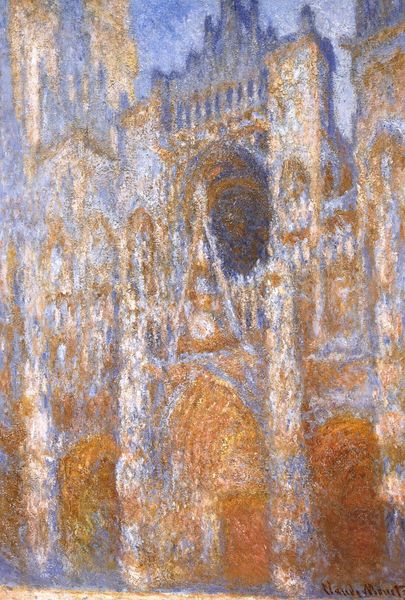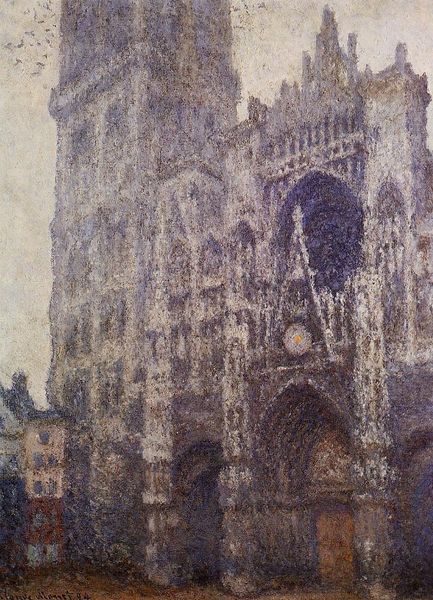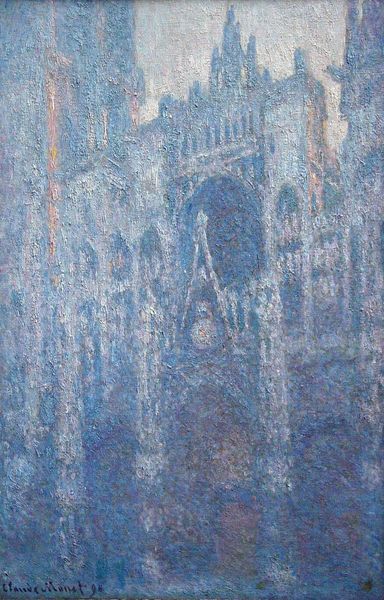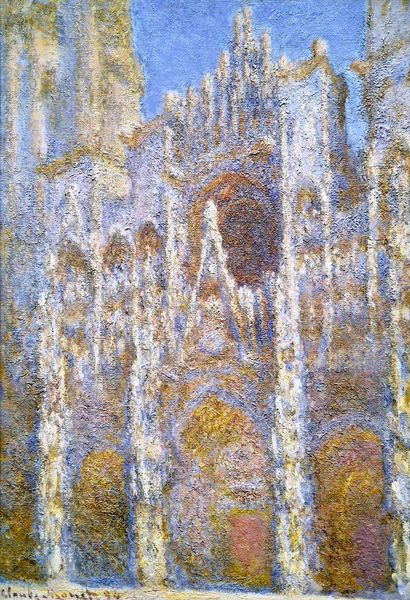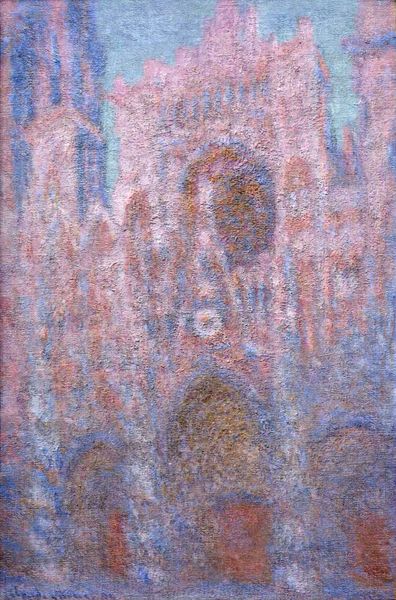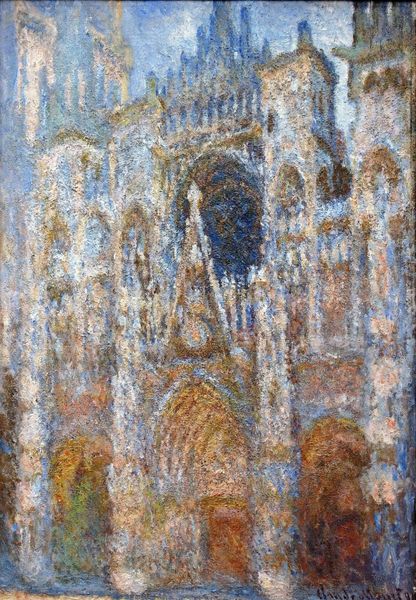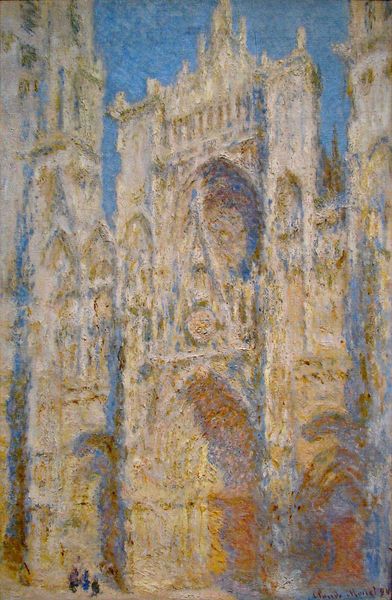
Copyright: Public domain
Curator: Here we have Claude Monet’s "Rouen Cathedral, the Portal, Morning Effect," painted in 1894, part of a series focusing on the cathedral. What are your initial thoughts? Editor: It's… overwhelming, in a way. A massive structure dissolving in light and atmosphere. The blueness almost feels like a cold mist. The materiality seems lost under the transient effects. Curator: That “dissolving” is precisely the point, isn't it? The cathedral, a symbol of enduring faith and power, is rendered almost ephemeral, its solidity challenged by the fleeting effects of light and weather. The morning light washes over it. Editor: True. It challenges its solidity with layers and textures of color, making it less about architectural form and more about sensory experience, like a visual poem expressing emotions more than depicting the thing itself. Curator: Yes, Monet's series, particularly this one, becomes about capturing the transient moment. Gothic cathedrals like Rouen carried immense cultural weight. He's less concerned with architectural details than with the sensation, almost the spiritual impact, of the building under specific conditions. Think of the implied sounds, the soft chants that these walls hold—a sense of morning devotions. Editor: But doesn’t this very act detach the cathedral from its religious purpose, transforming it into a mere object of aesthetic study, a vehicle for exploring light and color? He studied color and optical effects from life in front of Rouen cathedral between 1892 and 1894. Curator: I disagree. Instead, consider it a re-sacralization. Monet acknowledges the cathedral's history—it had become embedded in the French national identity and collective memory. It becomes a personal and somewhat abstracted expression of faith. I appreciate how it evokes feeling through visible brush strokes of color. Editor: That's a generous reading. The brushwork indeed fragments the surface, the blue, yellow and hints of orange are a mosaic that’s not entirely cohesive. Monet seems interested in perception as much as in belief, the act of seeing more so than faith. Curator: Perhaps both are intertwined here. Looking at the cultural memory enmeshed within our senses and Monet captured a cathedral that embodies a shift toward modernity itself. It’s certainly a worthwhile reminder. Editor: Indeed, whether monument or painted illusion, Monet certainly invites endless ways of viewing this gothic architecture. A good painting is one that opens avenues for introspection.
Comments
No comments
Be the first to comment and join the conversation on the ultimate creative platform.
